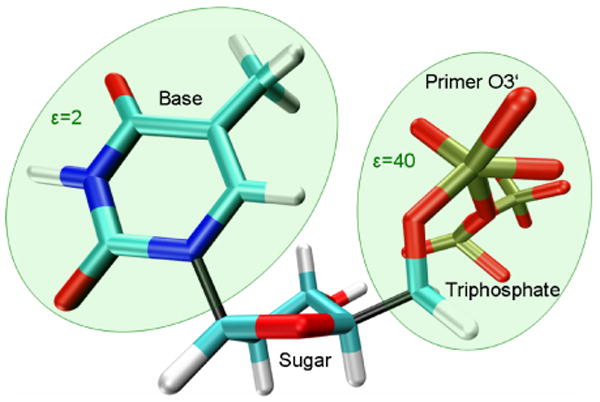Figure 4.

Breaking up the dNTP-TS (dTTP-TS shown) for calculating the contributions of the base and the triphosphate part separately, taking into consideration the different dielectric environments. The dielectric constant ε used for the calculations with the base in region I was 2. The sugar contribution was found to be negligible and thus included as part of the “protein” (region II), rather than as substrate (region I). Due to the highly charged environment of the triphosphate-TS fragment, a dielectric constant of 40 was used for this part of the molecule; note that the O3′ atom of the primer was included in region I and thus is also shown in this representation. The color scheme is according to atom type (cyan [C], white [H], blue [N], red [O], light brown [P]); the bonds connecting the three parts of the dNTP are represented in black.
